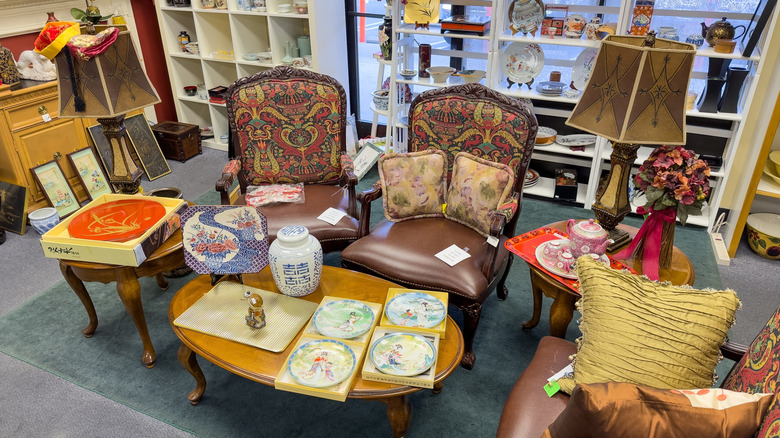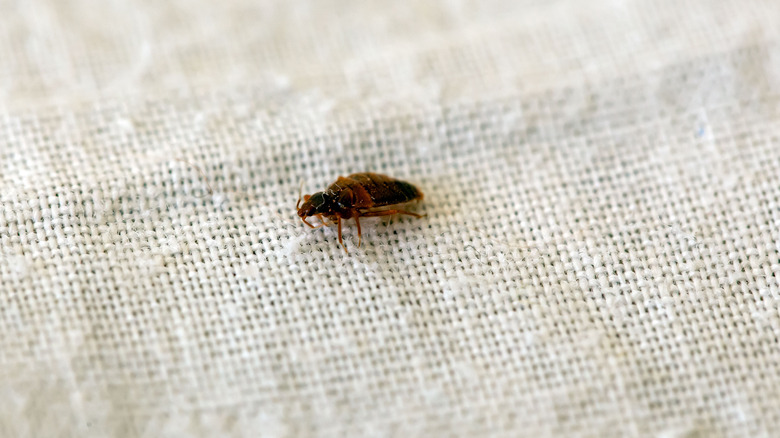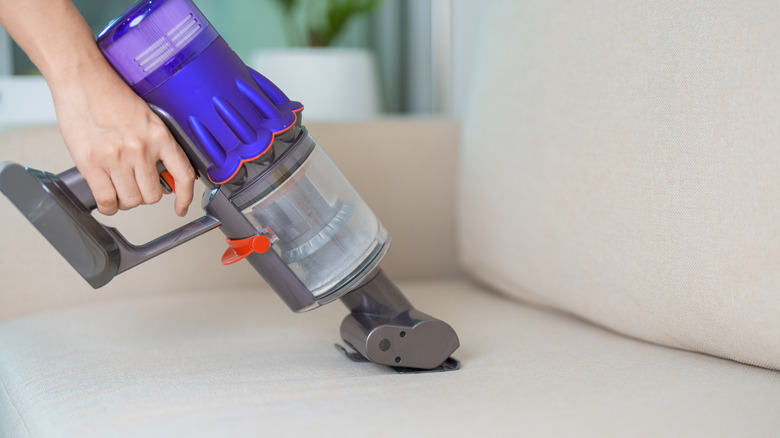Tips And Tricks To Avoid Bringing Home Bed Bugs In Your Next Thrifting Haul
It's often the thrill of that hunt that makes thrifting home decor so popular. Who knows what treasure you'll find tucked among all the knicknacks? The problem is you could also discover bed bugs in those finds. A single donation that's infested with bed bugs could start a whole chain of infestations throughout the store as the bugs scurry from item to item. So how can you protect your home from a full-on bed bug invasion? You don't have to give up your thrifting habits completely, but you should start inspecting items closely and learn what to look for. You can also minimize the risk of bed bugs by quarantining secondhand items, cleaning them, and watching for a problem.
Furthermore, some may simply want to avoid items that have a higher risk of carrying bed bugs. That typically includes anything that's upholstered or made of fabric like throw pillows, bedding, and mattresses. The little pests can cling to these items easily and hide in little crevices, which can make them more difficult to spot. Seams on pillows and upholstery make an ideal hiding spot for bed bugs.
Choosing your secondhand shopping locations carefully could also help. You'll find differences in the way they process, inspect, and clean the items they receive. Ask your favorite thrift stores how they handle their donations. Do they clean items or check for bed bugs? How do they treat the situation if they have an infestation? Even with thorough inspections and cleaning procedures, it's still possible for some bed bugs to slip through, but sticking to stores that take precautions gives you a safer shopping experience.
Inspect items closely before bringing them home
To avoid bringing bed bugs into your home on thrifted items, do a thorough inspection first. Before you start shopping, it's helpful to know what you're looking for. Bedbugs are roughly the size of an apple seed, or about ¼ inch long, with flat, oval bodies and a reddish-brown hue. You might also notice red or rust-colored spots on items or tiny dark spots. Younger bed bugs are smaller in size and may appear translucent, tannish, or whitish-yellow.
You likely won't see any bugs crawling on the furniture in a thrift store at first glance, but they could still be there, hiding in the seams and crevices. Pick up small items and look at them from all angles. Shake fabric items like blankets and pillows. For throw pillows, pull back the seams and unzip the cover if possible. To check a couch for bed bugs, focus on the seams and zippers on cushions with removable covers. Lift cushions that aren't attached so you can inspect all sides and look underneath. Don't forget the frames, springs, and other hidden components. Be cautious of rips, tears, or holes that could serve as a hiding spot for bugs.
It's also possible for bed bugs to hide on solid items like desks or shelves. Open drawers and look in any cubbies on the item. If there are removable shelves, pull them out to look behind and along the edges. Corners, crevices, and screw holes are possible hiding spots on hard furniture items.
Continue the watch for bed bugs at home
When you find valuable items at the thrift store that pass your initial inspection, proceed with caution. Wait before bringing them into your home, as leaving items outdoors or in your garage where they're less likely to infest the house gives you more time to check. Do another thorough inspection a few days later, using flashlights and magnifying glasses if necessary.
Items that can be washed should go in the washer and dryer immediately to kill bugs you might have missed. If you buy upholstered furniture or throw pillows, read the care instructions to see if you can remove the covers and throw them in the washing machine. Heat can kill bed bugs, so wash the items on the highest water setting it can handle without damage. Then, toss them in the dryer.
Furniture and home decor items can't go into the washing machine, so you'll need to clean them by hand. Vacuuming is an easy way to remove bed bugs or eggs that hitched a ride on your thrifted furniture find. Go over all areas, particularly seams, cracks, and crevices. When you empty the canister, do so in a trash can that won't go inside the house. The heat from a hair dryer or steamer could also help kill bed bugs on furniture. Use caution to ensure the heated air or steam won't damage the surface. Cleaning hard-surface items like headboards and nightstands with soapy water is also an option. Do a final inspection before moving the item into your house, and continue checking for bugs periodically to catch a potential infestation early.


